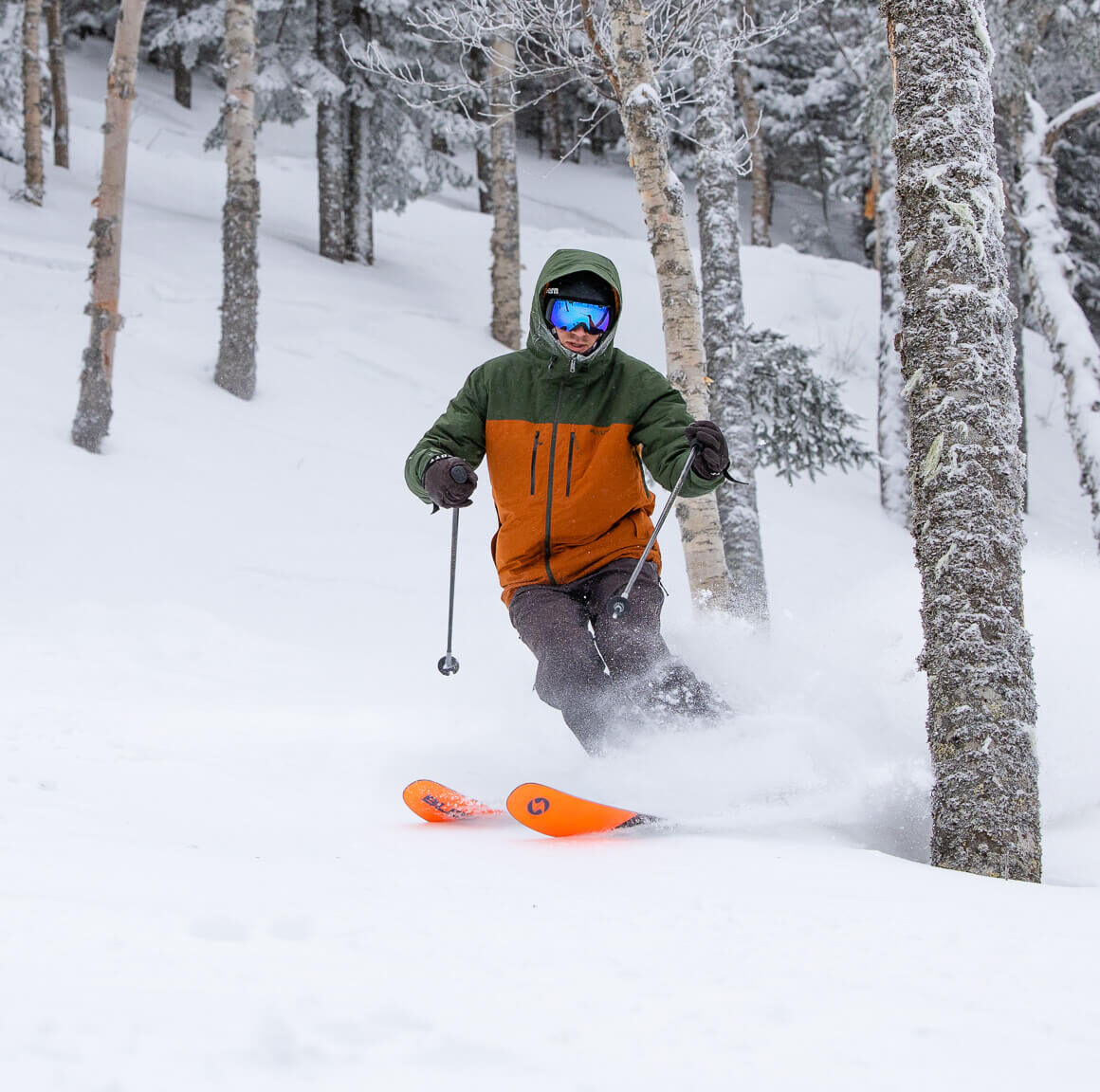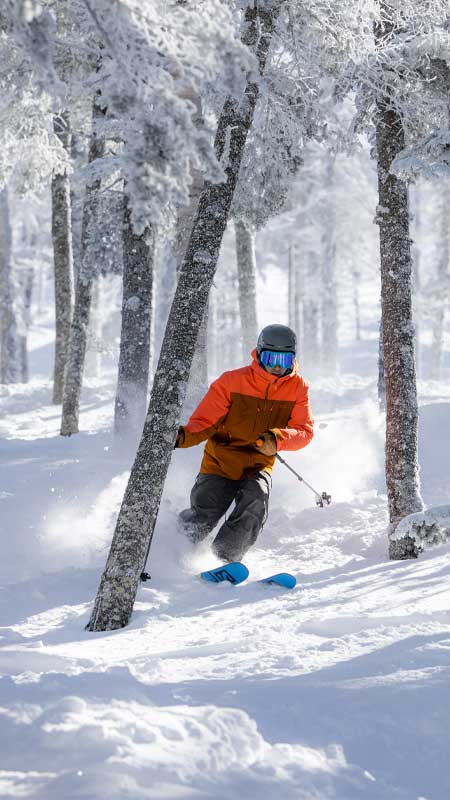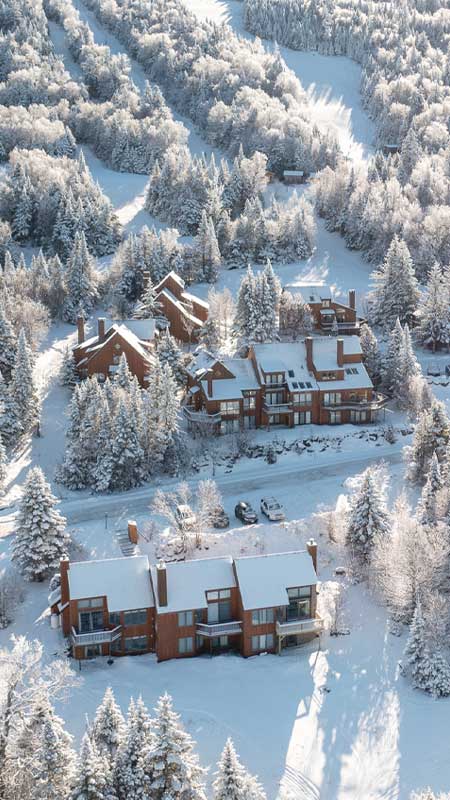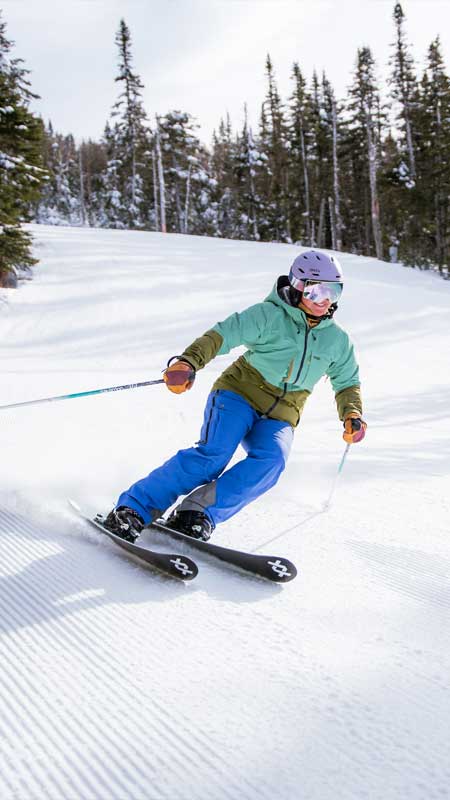Resort Info
Saddleback Mountain Stats & History
We suspect that you’re getting the sense that we’re proud of this mountain and everything it offers, and if you give us half a minute (OK, maybe just a bit longer) we’ll be happy to tell you all the reasons why. But sometimes you just need the simple facts, which is why we’ve created this page. That said, we still hope we’ll get a chance to bend your ear about all the other reasons Saddleback is so great.
- Base elevation: 2,460’ *The highest base elevation of any ski area in the East*
- Summit elevation: 4,120’
- Vertical drop: 2,000’
- Annual average snowfall: 225”
- Number of lifts: 6
- Named runs: 68
- Skiable acreage: 600+ skiable acres
- 88 acres of epic, hand-cut glades
- 40 acres of gentle slopes and prime beginner terrain
- Longest run: 3.1 miles
- $6.5 million in recent snowmaking enhancements
Lift & Trail Status
Saddleback is home to four quad chairlifts, a t-bar, and a beginner moving carpet, with more to come in the near future.
- The South Branch Beginner Terrain Quad Chairlift accesses 354 vertical feet of beginner-friendly terrain. It’s the perfect choice for new skiers/riders of all ages.
- The Kennebago Quad Chairlift delivers 960 vertical feet of expert and intermediate terrain, along with some of the best views in New England.
- The Rangeley Detachable Quad Chairlift serves a variety of mixed terrain, whisking skiers and riders up 1,177 vertical feet in just over four minutes.
- The Cupsuptic T-Bar follows the old T-Bar Line trail and brings riders up to the top of The Pass. From here, you can access some of our best blue terrain and the Woolly Bugger Glades or take The Pass to crosscut over to the Kennebago Quad.
- The Sandy Quad serves the Wheeler slope and allows for quick terrain park access. This lift can also give access to the Cupsuptic T-Bar on those wind-hold days.
- The Molly Chunkamunk Moving Carpet is located on the lower portion of Smelt Streamer.
Trails and Terrain Parks
Saddleback boasts 68 trails in three distinct pods that keep expert skiers separated from beginners on the mountain. We also have two terrain parks, so no matter your skill or style, you’ll find lots to love.
- 23 Green Beginner/Easier Trails
- 20 Blue More Difficult Intermediate Trails
- 18 Black Most Difficult Trails
- 7 Double Black Extremely Difficult Trails
- 2 Terrain Parks
Saddleback Mountain History
In the six decades since the first T-Bar started spinning, a lot has changed at Saddleback. And while every ski mountain has its own history, we think it’s pretty safe to say that few have experienced quite so many twists and turns as ours. Here are just a few highlights from the past 60 years.
The Early Years
After years of planning and months of trail work, Saddleback officially opened to skiers on December 31, 1960, with a single T-Bar serving the Wheeler Slope. By the end of January, a second, upper mountain T-Bar opened, giving skiers access to Grey Ghost and Hudson Highway. For the ‘63-’64 season, Saddleback installed the 4,600-foot Mueller double chairlift, which at the time was the longest chairlift in Maine. This achievement was followed by two dismal winters (the ‘63-’64 season lasted for five weeks, while ‘64-’65 saw a whopping two weeks of operations). The mountain was put on the market, and in 1965, Saddleback was acquired by J. Richard Arnzen for a reported $140,000. Arnzen owned Saddleback until his untimely death from cancer in 1972, at age 53.
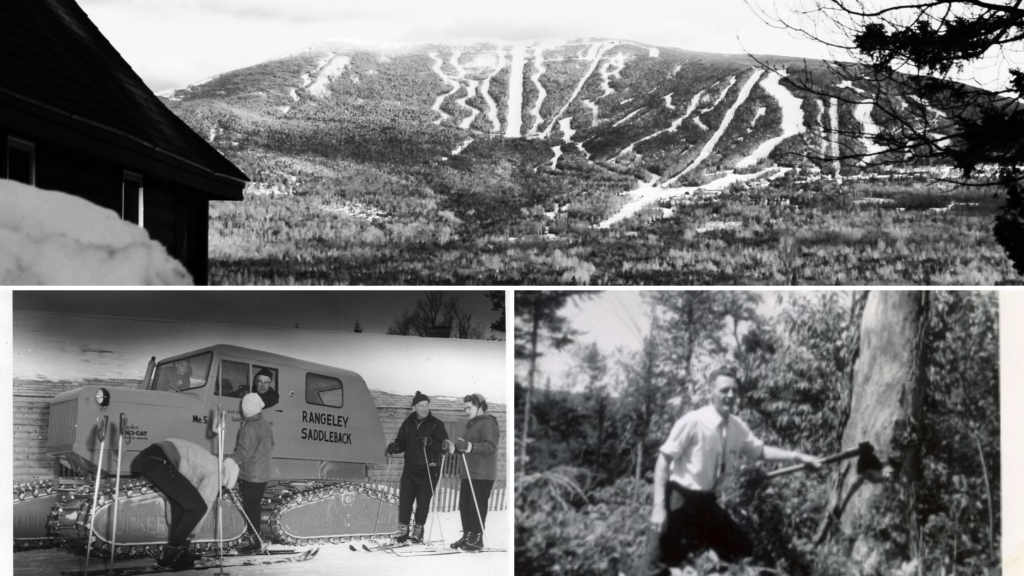

The Middle Years
Over the following three decades, Saddleback changed hands five times, including to Massachusetts businessman Donald Breen, whose aspirations to create the “Vail of the East” were thwarted by a legal dispute with the National Park Service. The Park Service sought to seize 3,000-acres of Saddleback land as part of its conservation efforts for the Appalachian Trail, which runs across the mountain.
After years of negotiations, the National Park Service and Saddleback reached a deal in which the Breens donated 570 acres along the Appalachian Trail corridor, while selling the 600-acre back bowl for $4 million. While the deal meant Breen could move forward with his development of the resort, the long battle with the government had consumed millions of dollars and nearly two decades of his life. Now in his 70s, Breen was ready to retire. In 2001, the massive resort property was put on the market for $12 million.
The Next Century
Following the 2002-2003 season, the Breen family announced that they would not operate the ski area in 2003-2004. And as fall approached, it looked like Saddleback would indeed cease operating. In September, a Saddleback skier and condo owner named Bill Berry approached Breen and offered to buy the ski area.
Following their first season as owners, the Berry family started an aggressive expansion plan. For 2004-2005, the main lodge was dramatically expanded, the main chairlift refurbished, and the lower mountain expanded into the novice South Branch Area with a new quad chairlift. Dramatic long-term plans were also released, involving the development of new real estate and multiple new trail pods and lifts.
The Berry’s continued investing in Saddleback for the next several years, but in December 2012 the Berry family announced Saddleback was for sale. In September 2015, the family announced they were in negotiations with multiple potential buyers, but a deal remained elusive, and the mountain did not open for the ‘15-’16 season. An effort to establish a non-profit cooperative to operate the ski area also failed to materialize, and the area sat idle during the 2016-17 season, as well.
On June 28, 2017, the Berry family announced they had reached an agreement to sell Saddleback to the Australia-based Majella Group. Majella had plans to “turn Saddleback into the premier ski resort in North America.” However, despite announcements that “physical work” had started in September and that the company was “committed to opening in some capacity for the 2017-18 ski season,” the area remained idle that winter and the sale was not completed.
New hope emerged in March of 2019, when Boston-based Arctaris Impact Fund made an offer. Talks continued for months, culminating in the purchase of Saddleback in January 2020. With the purchase, Arctaris announced plans to install a high-speed quad and to reopen the ski area for the 2020-21 season.
This brings us to today, and the resurrection of Saddleback, which could not have been possible without the efforts of all who have come before, and the remarkable support of the Rangeley community, the donors who gave so generously and to Arctaris Impact Fund, who support us now. For all of this, we are grateful and honored to be giving the Saddleback family its home back.
Being owned by an impact fund, our mission goes beyond changing the financial trajectory of the mountain. Our responsibility includes helping the region solve some of the challenges facing every rural community: affordable housing, affordable childcare, workforce development and transportation. We have also convened task forces to develop strategies for getting seasonal workers year-round benefits, which doesn’t exist anywhere in the country, and to increase access to health and wellness care in rural communities.



